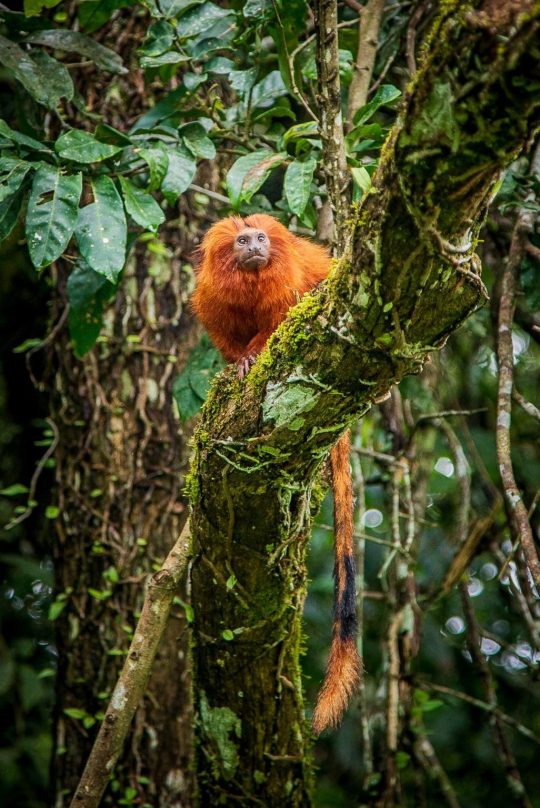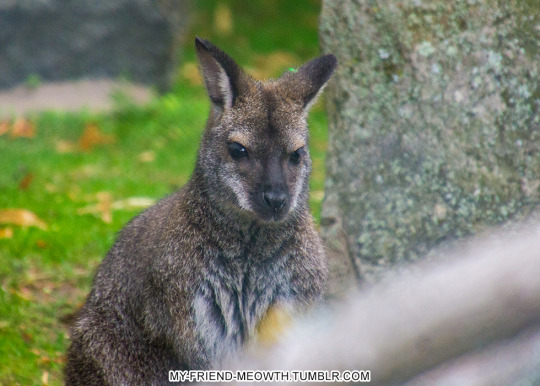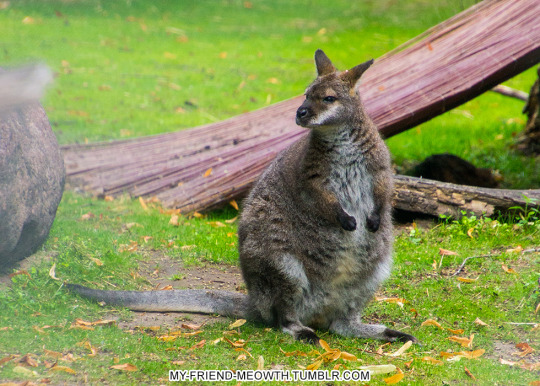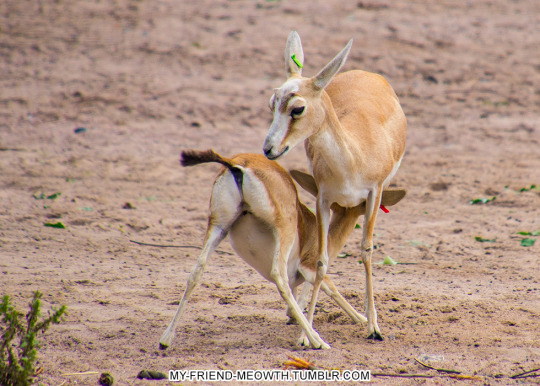#Leontopithecus Rosalia
Text

Golden Lion Tamarin
#golden lion tamarin#Leontopithecus rosalia#Primates#Haplorhini#Simiiformes#Callitrichidae#Leontopithecus#upl
22 notes
·
View notes
Photo

A golden lion tamarin (Leontopithecus rosalia) in the Poço das Antas Biological Reserve, Rio de Janeiro state.
Image by Marcio Isensee e Sá.
#marcio isensee e sa#photographer#golden lion tamarin#tamarin#animal#mammal#wildlife#leontopithecus rosalia#poco das antas biological reserve#rio de janeiro#nature#brazil
181 notes
·
View notes
Photo

こんなにオレンジだったか
@浜松市動物園
Were you sooo orange?
@Hamamatsu City Zoo
59 notes
·
View notes
Text


Golden lion tamarin (Leontopithecus rosalia) in Brazil
Photos by Kevin Schafer
#Leontopithecus rosalia#Leontopithecus#golden lion tamarind#tamarind#primates#mammals#colorful mammals#brazil#brazilian monkeys#animals#wildlife#nature#yellow
12 notes
·
View notes
Text
Creature Awaits #218
Each week I plan to feature an amazing creature, admiring God's fantastic artistry. Hopefully it’ll brighten someone’s day to see something new and interesting if they haven’t seen it before. : )
Continuing with bright, sunny colors in our summer features! 🌅🏝️

(A brilliantly-captured still taken by fantastic photographer, William Warby (CC BY 2.0))
The Golden Lion Tamarin
Scientific Name: Leontopithecus rosalia
Region: A small region of forests along the southeast coast of Brazil
Size: About 10.3" (~26.1cm) tall, not including their extremely long tail
Interesting Notes: These beautiful and bright golden monkeys are very energetic and social animals, living in troops of 2-8 individuals. (Thus, they don't really make good pets due to their social and environmental needs.) Sadly, their numbers were greatly reduced due to habitat loss; however, thankfully their populations have started to make a comeback due to conservation efforts - raising from their low point of 200 in 1981, back up to roughly 3,200 again in the wild today. : )
#creatureawaits#beautiful animals#bright animals#animals of brazil#endangered animals#endangered species#golden lion tamarin#Leontopithecus rosalia#conservation#comeback
6 notes
·
View notes
Photo

2022-03-07
3 notes
·
View notes
Text
{Can't draw so I'm going to write it!}
Therian HRT Diary, Day One:
"I was nervous that the doctor would turn me down on account of the endangered status of my desired species. He assured me that if they could do dragons they would have no problem finding a way to do Leontopithecus rosalia as well. The consulation when really well. I expected as much. I've already done HormoneRT, what's a little HumanRT as well? He assured me that the two things would not react badly with each other and my prescription will be ready for me tomorrow!"
Therian HRT Diary, 1 month:
"I'm definately a lot more hairy that I was before and even my bald spots have filled in! Yessssss. The colour has almost completely changed too, becoming the lovely orange colour I always wanted it to be. The texture has changed too. It's hard to describe but it's definately more fur-like than hair-like now, so much thicker than I'm used to and a little itchy. That's fine though because my nails are thicker, longer and stronger too!"
Therian HRT Diary, 3 months:
"I have fur covering my entire body now, shorter and darker on my face of course. I'm starting to get a lot of pains in my joints, but I'm already kind of used to that having chronic pain. What's even better is that my canines are nice and long and sharp! I feel stronger and can climb a lot better than before. My tail is starting to come in and that hurts like Hell..."
Therian HRT Diary, 6 months:
"I can't wait for tail grown and bone changes to end, ahhhh...I don't regret the HRT but Goooood. I'm moving slower because it hurts too much. I'm lucky I won't actually shrink in size, I guess. That would have really started to hurt. My fingers are done though, I think. They're much longer and stronger. My thumb is technically still opposable as it hasn't change much but it's no longer in proportion to the other fingers which means I've had to learn to grasp and hold things like pencils in whole new ways. My tail is small, but cute and just as furry as the rest of me. Yeah, I think it's worth the pain."
Therian HRT Diary, 8 months:
"Still growing the tail...well, it is going to be pretty long when it's done. I can now run on all fours just as well as on two legs, if not faster and easier. It's good to be able to stand still so I can reach things though! Cravings for insects are off the charts. I asked the doctor about it and he said I should still eat food for humans, but can absolutely eat any insects a golden lion tamarin would too. Neat! I've had a lot of fun figuring out all the new flexibility in my body, but the aches are still there so I won't push it too far. My eyes have started to darken in colour too and I no longer have much of a visible eyebrow. Weird thing to change so late but I'm not complaining! My nose is finally changing shape too. I was worried it wouldn't and the human nose was starting to look really odd! My ears are growing in size, even though I can barely see them behind all this fur!"
Therian HRT Diary, 12 months:
"I think I'm finally done! My tail is longer enough to sweep the floor unless I choose to move it now. My body no longer aches as my new bone structure has settled, my facial features have done changing and I feel full of energy all the time! I'm spending a lot of my days in trees I could only have dreamed of climbing before the Therian HRT, and even met a couple more monkeys (not my species though :( ) and a bird this way! My move to a therian-friendly village took longer than I thought it would, luckily during this time I wasn't in a very conservative area. I did get a lot of looks though and a little bit of harassment. Things are much better here and they even welcome those who haven't had the therian HRT so my partner can live with me. I'm at the end of a cul-de-sac, my neighbours to the left are a seal and a aphid (what an unusual pair /pos), and my neighbours to the right are a squirrel, a mongoose and a rose-bush. I'd only heard of plant-based Therian HRT before so it was really cool seeing this mix of animal and plant to create something new. So far everyone is really accepting and just as curious to see a primate amongst their midst! I've never been happier : ) "
#otherkin hrt#otherkin#otherkind#alterhuman#therian#primate therian#primate kin#monkey therian#monkey kin#therian hrt
21 notes
·
View notes
Text
Korkeasaari


Kultaleijona-apina (Leontopithecus rosalia) Golden lion tamarin


Punaniskakenguru (Notamacropus rufogriseus) Red wallaby



Kuhertajagaselli (Gazella s. subgutturosa) Goitered gazelle

Kaksikyttyräinen kameli (Camelus bactrianus) Bactrian camel
#aurorus#anchiornis#korkeasaari#golden lion tamarin#red wallaby#goitered gazelle#bactrian camel#pokemon#my pokemon#palaeoplushies
5 notes
·
View notes
Text

INKTOBER 2023 Day 11 - Golden lion tamarin (Leontopithecus rosalia)
Patreon / Ko-fi / Society6 / Redbubble / Commissions / Colouring book
23 notes
·
View notes
Text
As notas de real, moeda oficial do Brasil, são muito mais do que simples meios de troca. Cada cédula conta uma história e exibe símbolos que representam a rica diversidade cultural, histórica e natural do país. Vamos explorar quem são essas figuras misteriosas que decoram nossas notas de real e o que elas significam.
A História e a Simbologia das Notas de Real
Desde a introdução do real em 1994, como parte do Plano Real para estabilizar a economia, as cédulas passaram por várias atualizações. As notas atuais são da segunda família do real, lançada entre 2010 e 2012, com a inclusão da nota de R$ 200 em 2020. Cada nota apresenta figuras e elementos de segurança que refletem a identidade brasileira.
Nota de R$ 2
Anverso: A frente da nota de R$ 2 exibe a efígie da República, uma figura feminina que simboliza a República Federativa do Brasil. Este busto é inspirado na estátua da Liberdade, representando liberdade e democracia.
Reverso: O verso apresenta a tartaruga marinha (Caretta caretta), destacando a importância da conservação da vida marinha brasileira.
Nota de R$ 5
Anverso: A efígie da República continua na frente da cédula de R$ 5, mantendo a unidade visual das notas.
Reverso: A garça (Egretta thula) é a estrela do verso, simbolizando a rica avifauna do Brasil.
Nota de R$ 10
Anverso: A efígie da República novamente aparece na frente da nota de R$ 10.
Reverso: A arara (Ara ararauna), uma ave icônica e colorida, representa a exuberância da fauna brasileira.
Nota de R$ 20
Anverso: A efígie da República está presente na frente da cédula de R$ 20.
Reverso: O mico-leão-dourado (Leontopithecus rosalia), um primata ameaçado de extinção, chama a atenção para a importância da preservação das espécies nativas.
Nota de R$ 50
Anverso: A frente da nota de R$ 50 mantém a efígie da República.
Reverso: A onça-pintada (Panthera onca), um dos maiores felinos das Américas, ilustra o verso, destacando a majestade da fauna brasileira.
Nota de R$ 100
Anverso: A efígie da República aparece na frente da nota de R$ 100.
Reverso: O peixe garoupa (Epinephelus itajara) é retratado no verso, sublinhando a riqueza dos recursos aquáticos do Brasil.
Nota de R$ 200
Anverso: A mais recente adição, a nota de R$ 200, também apresenta a efígie da República na frente.
Reverso: O lobo-guará (Chrysocyon brachyurus), o maior canídeo da América do Sul, ilustra o verso, promovendo a conscientização sobre a conservação desta espécie.
Importância Cultural e Histórica
Os símbolos e figuras nas notas de real foram escolhidos para refletir aspectos importantes da cultura, história e biodiversidade do Brasil. Cada cédula educa o público sobre a riqueza natural do país e a necessidade de preservação ambiental, além de promover a identidade nacional e o orgulho pela diversidade brasileira.
Elementos de Segurança
Além dos desenhos e bustos, as notas de real incluem vários elementos de segurança para prevenir falsificações. Entre esses elementos estão marcas d'água, hologramas, tintas especiais e microimpressões, que protegem a integridade da moeda e demonstram a inovação do Banco Central do Brasil.
As notas de real são muito mais do que simples cédulas de dinheiro. Elas são uma representação da riqueza cultural, histórica e natural do Brasil. Cada detalhe, desde os personagens e símbolos escolhidos até os elementos de segurança, foi cuidadosamente pensado para representar a identidade do país. Conhecer as imagens que decoram nossas cédulas é uma forma de valorizar ainda mais nossa herança e biodiversidade.
Gostou desta notícia?
Receba Mais Conteúdos Exclusivos!
Entre no nosso grupo no WhatsApp e seja o primeiro a receber notícias exclusivas diariamente. Clique aqui para participar, é grátis! ENTRE NO GRUPO AQUI
Mantenha-se Informado!
0 notes
Text
The Golden Lion Tamarin: A Symbol of Conservation
The Golden Lion Tamarin (Leontopithecus rosalia) is one of the most charismatic and visually striking primates in the world. Known for their vivid golden-orange fur and playful demeanor, these small monkeys are not only a symbol of the lush Atlantic Forest of Brazil but also an emblem of the global conservation movement. Despite their charm and appeal, Golden Lion Tamarins face significant…

View On WordPress
0 notes
Text

Golden Lion Tamarin (leontopithecus rosalia)
taken at the Denver Zoo in Denver, Colorado
status: endangered
"In the early 1970s, there were as few as 200 golden lion tamarins in the wild. They were upgraded from critically endangered to endangered in 2003 following intensive conservation efforts. About one-third of the wild population today originated from golden lion tamarins raised in human care." - Smithsonian National Zoo and Conservation Biology Institute
#Golden Lion Tamarin#Leontopithecus rosalia#endangered#denver zoo#denver#zoo#colorado#photo#photography#canon#canon 6d mark ii
3 notes
·
View notes
Text
Daemons of Hogwarts: Molly Weasley
Molly Weasley's daemon is named Benedict, commonly called Ben, and his form is that of a a golden lion tamarin (Leontopithecus rosalia).
With bright orange fur he is highly visible to anyone who looks.
When not on Molly's shoulders Ben is often found herding their children's daemons.
#Harry Potter series#Daemon AU#Molly Weasley#Golden Lion Tamarin#Leontopithecus rosalia#Daemons of Hogwarts
6 notes
·
View notes
Photo

GOLDEN LION TAMARIN
Leontopithecus rosalia
©Laura Quick
A striking species, golden lion tamarins are small social South America primates from the humid forests in the heavily populated Atlantic coastal regions of southeastern Brazil. They have a magnificent reddish-gold coat and a long, backswept mane. Once down to 200 individuals in the wild, intensive conservation efforts have helped the population recover. Still an endangered species, there are about 2,500 in the wild — about a third of which are descendants of golden lion tamarins raised in human care.
In 1981, golden lion tamarins became one of the first species to be designated as part of the Association of Zoos & Aquariums' (AZA) Species Survival Plan, with 143 zoos participating in the captive breeding program.
Other posts you night like:
Golden Lion Tamarin
Diana Monkey
DeBrazza Monkey
#golden lion tamarin#leontopithecus rosalia#©laura quick#brazil native#south america#glaza#los angeles zoo and botanical gardens#lazoo#los angeles zoo#cute little guys#monkey#primate#animal#mammal#humid forests#SSP#species survival plan#2500 in wild
16 notes
·
View notes
Photo

Golden Lion Tamarins
Leontopithecus rosalia
#golden lion tamarin#tamarin#monkey#primate#mammals#mammalia#animal#animalia#animal photography#wildlife#wildlife photography#nature#haplorhini#simiiformes#calltrichidae#leontopithecus#leontopithecus rosalia#endangered#endangered wildlife#endangered species
126 notes
·
View notes
Photo

GLT
@浜松市動物園
15 notes
·
View notes